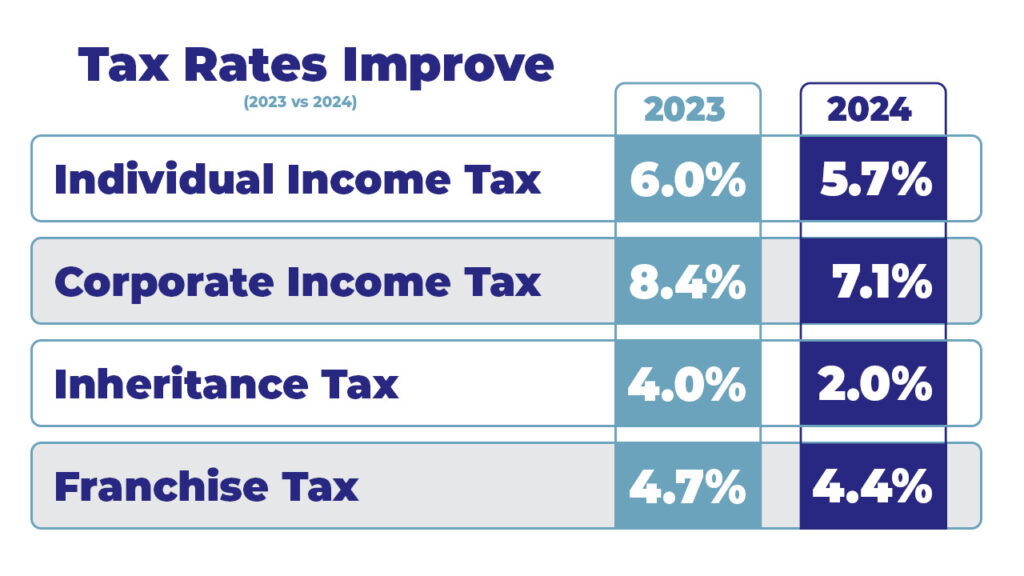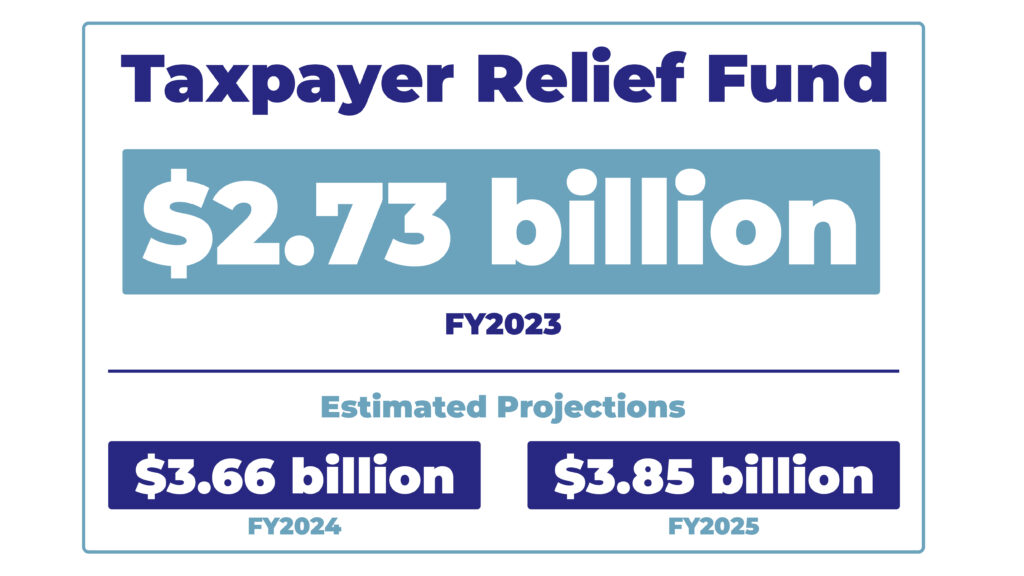Revenue is falling more slowly than initial estimates, and there is still room for more tax cuts.
Heading into the 2024 legislative session, Iowa is in a strong financial position. This was the message from the Revenue Estimating Conference (REC), which is tasked with the difficult job of predicting state tax revenue. Even with phased-in tax reductions, Iowa revenue remains resilient. The December REC estimate, which will be used by Governor Kim Reynolds to create her Fiscal Year (FY) 2025 budget proposal, is projecting $9.6 billion in revenue. Iowa’s sound fiscal foundation is the direct result of conservative budgeting and pro-growth tax reforms.
Critics were quick to point out that the REC estimates showed a decline in revenue as a result of the tax cuts. The REC estimated that in FY 2024 the state will take in $9.75 billion, which is a 1 percent decline from the previous year. The new $9.6 billion estimate for FY 2025 would be a similar 1.1 percent decline in revenue. Although revenue is predicted to dip again, it’s not because of a faltering economy or a state that is in a weak financial position. Iowa has been running huge budget surpluses in recent years and these declines are a product of phased-in tax cuts that allow Iowans to keep more of their money while right-sizing the state’s tax collections.
Further, the estimated decline in revenue is not as deep as initially expected. One reason for this was the strength of Iowa’s economy even with all the national economic uncertainty. Kraig Paulsen, chair of the REC and Director of the Iowa Department of Management, described this as “organic” growth. In describing the organic economic growth, Director Paulsen stated:
“I think it just means Iowans are working and they’re making money (and) they’re spending money. They’re doing the things Iowans do. And so that generates revenue into the state. Clearly those numbers are exceeding what the tax cuts reduced it by.”
The REC also noted that both sales and corporate tax revenue continue to be strong. The REC estimates took into consideration the tax changes that will take place starting in January 2024. Iowa’s top individual income tax rate will be lowered from 6 percent to 5.7 percent, while the corporate rate will drop from 8.4 percent to 7.1 percent. The inheritance tax, which is being phased out, will be reduced from 4 percent to 2 percent and the franchise tax will be lowered from 4.7 percent to 4.4 percent.

As the table below indicates, the revenue reduction comes from the personal income tax and “other taxes” categories. While more of Iowans’ income and inheritance will be left in their bank accounts, the sales tax and corporate income tax are projected to post increases, which will offset much of the difference.
“The December REC meeting again confirmed the strength of the Iowa economy and the benefits of bold tax cuts passed in 2018 and 2022. Hundreds of millions of dollars in tax cuts have helped Iowans keep more of their money to fight inflation and increase the reward for their work and investment,” stated Iowa Senate Majority Leader Jack Whitver.
Iowa’s conservative budgeting has continued to pay dividends. As noted above, Iowa’s budget has been in surplus recently, ending fiscal year 2023 with a $1.83 billion surplus, which was $86.3 million higher than originally estimated. The fiscal year 2024 surplus is projected to be $2.1 billion, rising to a $3 billion surplus in the fiscal year 2025.
Iowa’s reserve accounts (Cash Reserve Fund and Economic Emergency Fund) are filled at their statutory maximums and are projected to continue at this level in fiscal years 2024 ($961.9 million) and 2025 ($963.7 million). The surpluses have also fueled an enormous growth in the Taxpayer Relief Fund (TRF). The Taxpayer Relief Fund has a current balance of $2.73 billion and this is projected to increase to $3.66 billion in fiscal year 2024 and $3.847 billion in fiscal year 2025.

The large budget surpluses and the continual growth in the Taxpayer Relief Fund demonstrate that Iowa is still collecting too much from taxpayers. This has led both Governor Reynolds and legislative leaders to state that further income tax reform will be a priority in the 2024 legislative session.
“Projected revenues are expected to exceed state spending by $1.233 billion this year, setting the stage for Senate Republicans to seek more income tax relief, while implementing another conservative state budget,” stated Senator Whitver.
“I think there’s lots of room in there for all kinds of policy decisions, including tax cuts,” stated Director Paulsen. Implementing another “conservative state budget” is crucial. Governor Reynolds and legislative leaders have made prudent budgeting a priority.
Critics of Governor Reynolds and the legislature have been vocal in that not only are programs being underfunded, but additional tax cuts will have devastating consequences. Both arguments are wrong. First, the state’s spending continues to grow, while its priorities are being met. Additionally, the alleged “devastating” effect of tax cuts has failed to come to fruition, making such claims merely an example of crying wolf.
Evidence from other states demonstrate that a progressive tax and spend agenda is not sustainable. The Wall Street Journal noted that California, “after a $100 billion budget surplus two years ago is now staring at a $68 billion shortfall because the gusher of tax revenue from soaking the rich has dried up.” The $68 billion deficit is just the start and California’s Legislative Analyst’s Office is projecting “$155 billion in cumulative deficits over the next four years.” It is clear that California’s fiscal approach is not working.
Minnesota is another “Blue” state that is projecting a budget deficit. This year the Minnesota legislature enacted some of the most radical legislation in the nation. Governor Tim Walz and the Democrat-controlled legislature increased both spending and taxes. Going into the legislative session Minnesota had a budget surplus of $18 billion. Governor Walz and the Minnesota legislature not only spent every cent of that, but they hiked taxes and fees by $10 billion. Indeed, Minnesota’s state government spending will be 33% higher in 2027 than it was in 2022. Unable to keep pace with that inflated spending, Minnesota is now projecting a $2.3 billion deficit for the 2026-2027 biennium.
Why is Iowa’s fiscal foundation so strong? It is the direct result of Governor Reynolds and the legislature keeping the growth of spending in check, combined with conservative revenue estimates, and responsible, pro-growth tax reforms. Iowa is demonstrating to the nation how fiscal conservatism works. As a result, 2024 should be another historic year for Iowa taxpayers. The next REC meeting will be held in March 2024 and will provide legislators additional insight as they finalize the state’s budget.
